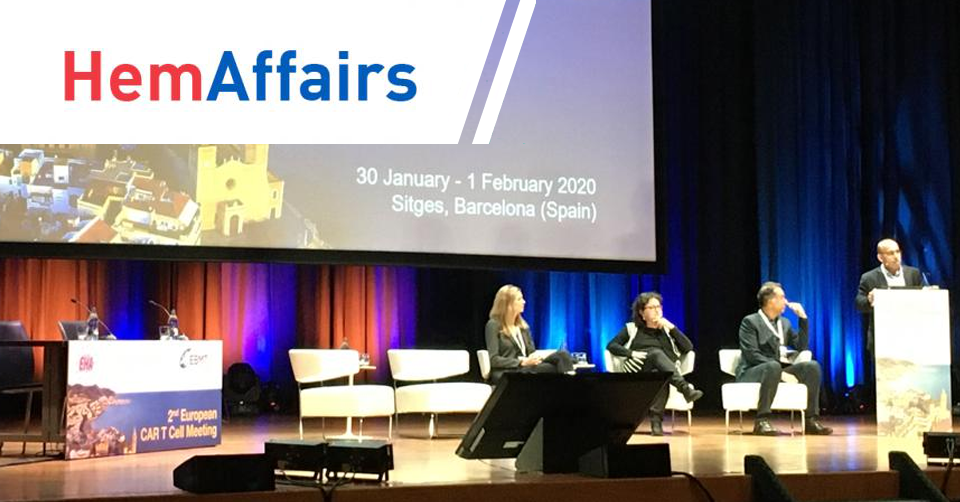ATMPs and CAR-T: the uptake challenge

Advanced therapy medicinal products (ATMPs) are a game changer for improving the life of patients with severe to life-threatening diseases. In hematology, for instance, CAR T cell therapy has shown promising results in tackling different blood cancers. Yet, despite fast-paced innovation in the field, few ATMPs have reached the EU market and benefited patients. The culprit: A topsy-turvy pathway to market authorization.
Profuse innovation; few market authorizations
ATMPs constitute a significant breakthrough in healthcare and bring hope for treating a wide range of conditions for which no therapies exist. The development of ATMPs – crucial for achieving truly personalized medicine – has progressed rapidly since the 2000s, with the number of treatments approved by the European Medicine Agency on the rise1. However, this positive picture conceals two worrying trends.
First, there is an astounding discrepancy between the number of ATMPs under development and those approved. In CAR T alone, researchers estimate that more than 400 clinical trials are ongoing2, indicating a high innovation rate. Still, only 14 have been granted EU authorization; 4 of which have already been withdrawn.
Second, we see a slow-down in market authorizations: While EMA gave its green light to three CAR T products in 2018, only one made it through the pathway in 2019.
Source: Update of the overview of the status of ATMP and CAR T products approved in the EU as of October 2018, in Heller et al. (ibid.)
Delayed market access can be explained by the different challenges affecting the scale-up of ATMPs, from manufacturing and patient safety to pricing. While we need to address those factors, it is essential to tackle the regulatory hurdles that remain for ATMPs at EU level.
- Regulatory hurdles to ATMP uptake
The European Union and the European Medicines Agency (EMA) have made undeniable efforts in the past decade to foster more rapid market access for innovative medicines, namely by: - Speeding up evaluation procedures: EMA’s Priority Medicines voluntary scheme (PRIME) provides support to medicines targeting unmet medical needs, so that they could reach patients sooner. Some of the recently authorized CAR T therapies have benefited from this accelerated evaluation procedure (e.g. Yescarta and Kymriah);
- Organizing parallel EMA-HTA consultation: In a regular procedure, Health Technology Assessment (HTA) bodies must await the opinion of EMA before initiating a risk/benefit assessment of the therapy, which is the basis for price negotiations and causes delays to patient access. To circumvent this long procedure, the EMA-HTA parallel consultation allows for early dialogue between manufacturers, regulators, HTA bodies and health insurers to establish the development plan and reimbursement prices of the medicine;
- Improving clinical practices: In October 2019, the European Commission revised the Guidelines on Good Clinical Practices specific to ATMPs to support healthcare professionals in aligning practices.
While such progress is welcome, several hurdles still remain for the EU to tackle and promote the uptake of ATMPs and CAR T therapy across Europe.
Fostering ATMPs and CAR T cell therapy
ATMPs represent a new powerful therapeutic tool, and at the same time a complex challenge when it comes to adoption in health systems. In this respect, CAR T constitutes a test-case for adoption of ATMPs.
Better access to CAR T cell therapies from both a geographical and financial perspective is important, and it is critical to ensure fairness in pricing and reimbursement, with all stakeholders on board. To achieve this goal, key concerns over the long-term safety of gene therapy drugs have to be addressed by further studies, such as the risk of insertional mutagenesis (leading to secondary malignancies) and germline transmission (potentially contributing to miscarriage, birth defects or neonatal diseases).
In addition, better understanding of driving factors for CAR T efficacy and dreaded toxicities is crucial for the uptake of this new therapy in different disease areas and patient populations. Adequate collection and interpretation of real-world data can help improve treatment with CAR T cells, leading to more therapies with fewer adverse events and better patient quality of life. An intensified, concerted effort by European authorities and stakeholders to establish the appropriate data infrastructure and regulatory framework is crucial.
1 De Wilde et al., ‘EU decision-making for marketing authorization of advance therapy medicinal products: a case study’, Drugs
Discovery Today, Vol. 23(7), July 2018.
2 Seimetz D., Heller K. and Richter J., ‘Approval of First CAR-Ts: Have we solved all hurdles for ATMPs?’, Cell Medicine, Vol. 11,
January 2019.



 Back
Back